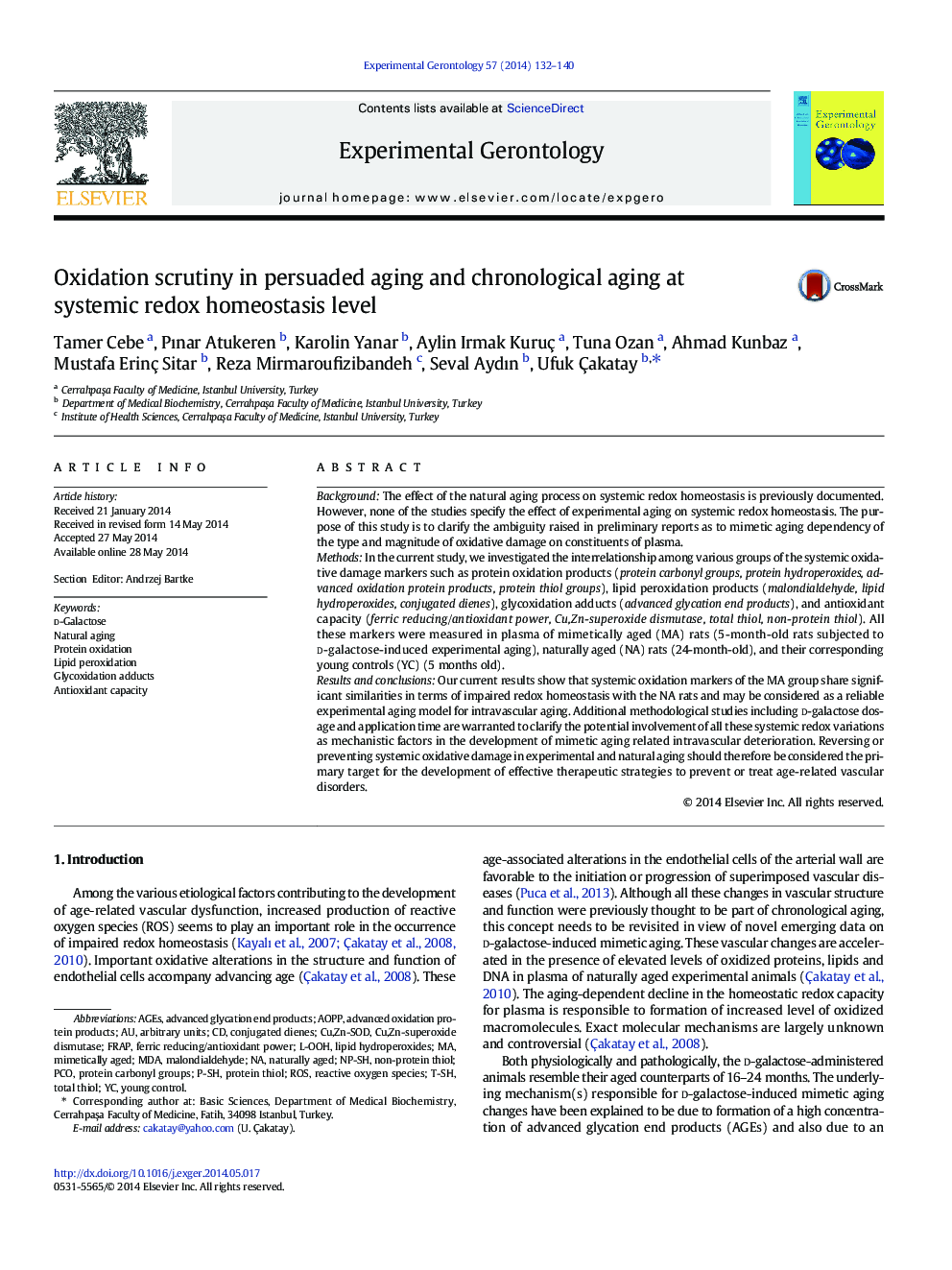| Article ID | Journal | Published Year | Pages | File Type |
|---|---|---|---|---|
| 8264127 | Experimental Gerontology | 2014 | 9 Pages |
Abstract
Our current results show that systemic oxidation markers of the MA group share significant similarities in terms of impaired redox homeostasis with the NA rats and may be considered as a reliable experimental aging model for intravascular aging. Additional methodological studies including d-galactose dosage and application time are warranted to clarify the potential involvement of all these systemic redox variations as mechanistic factors in the development of mimetic aging related intravascular deterioration. Reversing or preventing systemic oxidative damage in experimental and natural aging should therefore be considered the primary target for the development of effective therapeutic strategies to prevent or treat age-related vascular disorders.
Keywords
AOPPP-SHNP-SHMDAPCOAGEsT-SHFRAPCu,Zn-superoxide dismutaseD-galactoseROSProtein oxidationconjugated dienesAntioxidant capacitynon-protein thiolmalondialdehydeTotal thiolAdvanced glycation end productsadvanced oxidation protein productsCu,Zn-SODlipid hydroperoxidesarbitrary unitsLipid peroxidationprotein thiolNatural agingferric reducing/antioxidant powerProtein carbonyl groupsReactive oxygen species
Related Topics
Life Sciences
Biochemistry, Genetics and Molecular Biology
Ageing
Authors
Tamer Cebe, Pınar Atukeren, Karolin Yanar, Aylin Irmak Kuruç, Tuna Ozan, Ahmad Kunbaz, Mustafa Erinç Sitar, Reza Mirmaroufizibandeh, Seval Aydın, Ufuk Ãakatay,
